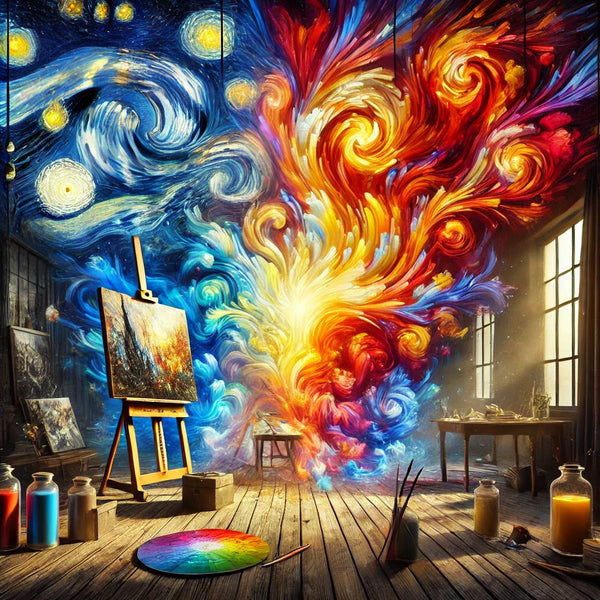
The Secret Language of Colors: How Artists Shape Emotions
What makes colors so powerful in art?
Colors have the ability to communicate emotions without words. A blank canvas holds infinite possibilities, and with each stroke, an artist breathes life into feelings—turning the invisible into something tangible.
How do different colors evoke emotions?
Step into a grand art gallery, where masterpieces from different eras tell their silent stories. A painting bathed in deep blue exudes solitude and calm. Another, filled with fiery reds and oranges, vibrates with passion and urgency. In a quiet corner, a grayscale portrait whispers sorrow and mystery. Each color carries its own emotional weight.
What emotions are commonly associated with colors?
Throughout history, artists have wielded color as a language:
-
Red commands attention, ignites desire, and fuels determination.
-
Blue soothes the soul, evoking peace or melancholy.
-
Yellow radiates warmth, optimism, and energy.
-
Black introduces intrigue, power, or despair. Every hue carries a message, whether subtle or striking.
How have famous artists used color psychology?
Great artists like Van Gogh, Picasso, and Monet mastered this unspoken language, shaping emotions through their use of color. Even today, designers, filmmakers, and painters continue to harness color psychology, knowing that a single shade can shift perception and evoke deep feelings.
Can color psychology affect everyday life?
Absolutely! Colors surround us daily—in our clothes, our homes, and the branding we see—subtly influencing our moods and decisions. The power of color isn't limited to artists alone. So, what colors will you choose for your own canvas of life? Will you paint with the boldness of red, the serenity of blue, or the joy of yellow? The masterpiece is yours to create.
https://artme.co.uk/products/artme-metallic-watercolour-palettes-36-colours

